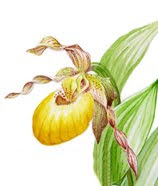In 2012 I was awarded a $1000 education grant by the American Society of Botanical Artists, the purpose of which was to bring botanical art awareness to new audiences. With the funds I was able to provide a curated set of Derwent graphite and Blick Studio colored pencils, along with a 6" clear ruler, vinyl and kneaded eraser, a thick wire-bound sketchbook, metal pencil sharpener, Blick pencil case, fruit and vegetables to draw, handouts (and in later classes, a canvas tote bag large enough to hold it all). With some matching funds from my business, we had enough materials to offer 77 students a spot in class and the materials to take home to continue their work.
Sunday, October 25, 2020
Sunday, September 27, 2020
Since the last post, I am sad to report that not only has the foredune been lost, along with all of its rare flora, but also the hind-dune, and half of the panne that followed that. Pannes are extremely rare wetlands with a cohort of flora unique to them. As the lake continued to encroach, the park district had to remove the entire east-facing boardwalk that used to lead to hundreds of feet of beach. Now, the lake is already up to the cross-boardwalk that was on the third dune back. We are concerned we will lose that section of boardwalk as well - we'll see what the winter holds with its multiple storms and freeze-thaw cycles.
This summer I did two Zoom presentations about the Duneslands, one for the Waukegan Public Library, and the other to West Cook Wild Ones, featuring our dune flora and its challenges. The Nature Conservancy printed up a number of dunesland bandanas to celebrate this year's nesting success by famous Piping Plovers, Monty and Rose, who returned to Montrose Beach this spring to raise three chicks. Last year we celebrated their first arrival and nesting at Montrose by publishing this Field Museum Dunesland Habitat Guide: https://fieldguides.fieldmuseum.org/guides/guide/1189
We hope these small efforts at raising awareness and helping people see the intrinsic value of our biodiversity will draw in more care and advocacy for these special areas.



